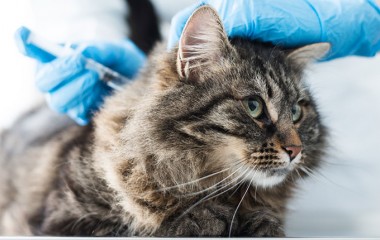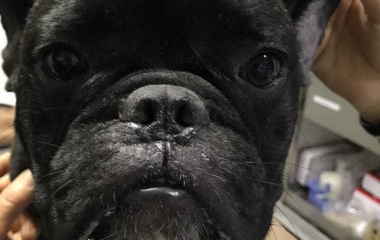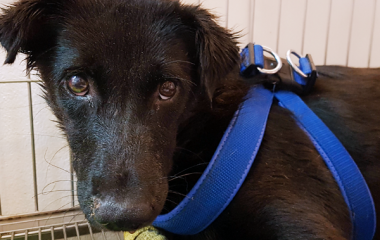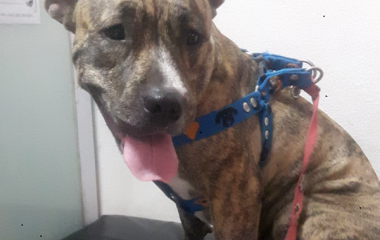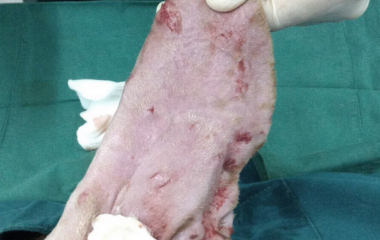Toffee with swollen belly (abdominal pain and inability to urinate)
07/2019
Toffee with swollen belly (abdominal pain and inability to urinate)
Toffee is domestic short hair (DSH) male cat. He is around 2 years of age. He got all vaccination and deworming completely but today the owner takes him to the hospital with vomiting and cannot see him urinate and defecate all day.
Toffee is domestic short hair (DSH) male cat. He is around 2 years of age. He got all vaccination and deworming completely but today the owner takes him to the hospital with vomiting and cannot see him urinate and defecate all day.
Mục lục (Hiện)
Veterinary examination found that he threw up, abdominal pain when palpate and abdominal distention. After that veterinary compress on his abdomen to let his urinate out but he had just a bit of urinate with blood. Then veterinarian use an ultrasound to examine urinary bladder structure and found that the bladder wall was thickening then veterinarian place urinary catherization for letting urinate out and collecting it to culture and make antibiotic sensitivity testing. Furthermore, veterinarian collected his blood for checking liver and kidney functions and found that they are both high, in addition his blood result showed he got an infection (increase white blood cells)
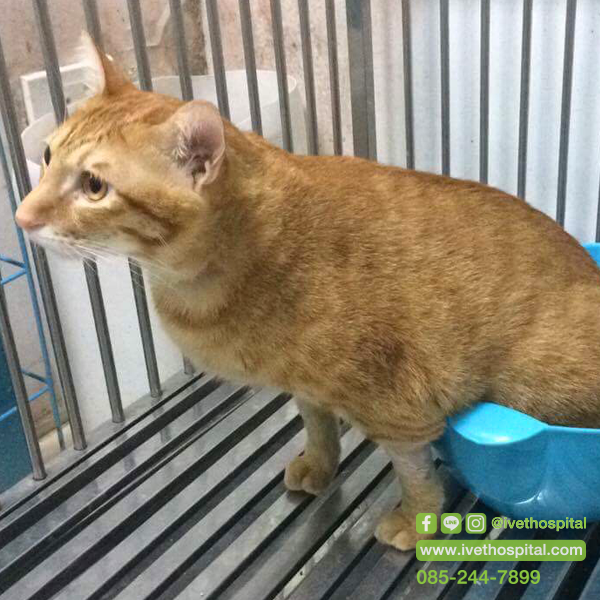
Veterinary still place urinary catherization for letting his urinate out and giving intravenous fluid for correcting dehydration, in addition giving him an antibiotic and pain killer medicine to control infection and relieve pain when he tried to urinate. Furthermore, giving him some medicines for renal supporting function. After that a few days his urine becomes more clearly without blood. Veterinarian allows him to back home but the owner has to keep controlling his food and weight strictly.

More information
Feline Lower Urinary Tract Disease: FLUTD is common disease in cat that involves the structures that make up the lower portion of the urinary tract. These structures include the urinary bladder and the urethra. The symptoms of urinary tract disease include: straining to urinate (dysuria), frequent attempts to urinate, painful urination, bloody urine (hematuria), lack of appetite, irritability and urinating outside the litter box. This disease can be seen in male cats and any age, although it is more frequently seen in overweight cats, particularly if they take little exercise, use an indoor litter tray, have limited access to outside and eat a dry diet. There are many causes of FLUTD including stress, environment and number of little trays. If you find your cat has this problem. You should take them to see veterinarian at iVET animal hospital.
Tags:

Veterinary still place urinary catherization for letting his urinate out and giving intravenous fluid for correcting dehydration, in addition giving him an antibiotic and pain killer medicine to control infection and relieve pain when he tried to urinate. Furthermore, giving him some medicines for renal supporting function. After that a few days his urine becomes more clearly without blood. Veterinarian allows him to back home but the owner has to keep controlling his food and weight strictly.

More information
Feline Lower Urinary Tract Disease: FLUTD is common disease in cat that involves the structures that make up the lower portion of the urinary tract. These structures include the urinary bladder and the urethra. The symptoms of urinary tract disease include: straining to urinate (dysuria), frequent attempts to urinate, painful urination, bloody urine (hematuria), lack of appetite, irritability and urinating outside the litter box. This disease can be seen in male cats and any age, although it is more frequently seen in overweight cats, particularly if they take little exercise, use an indoor litter tray, have limited access to outside and eat a dry diet. There are many causes of FLUTD including stress, environment and number of little trays. If you find your cat has this problem. You should take them to see veterinarian at iVET animal hospital.




